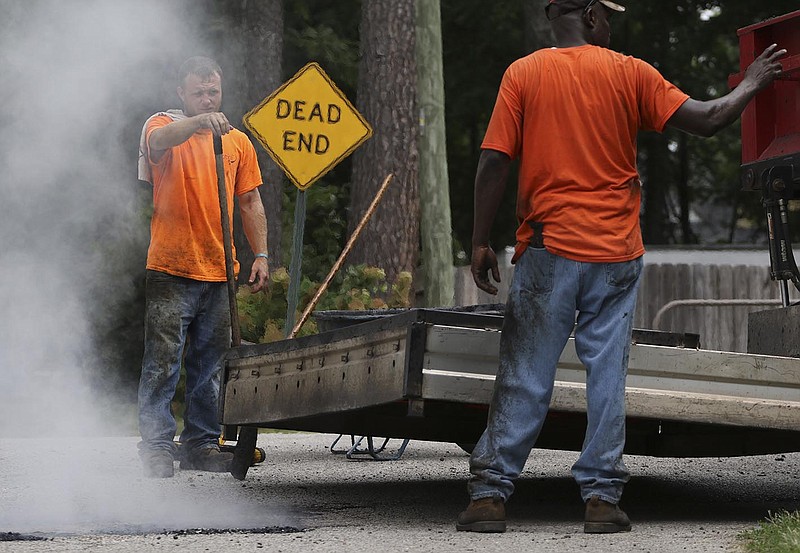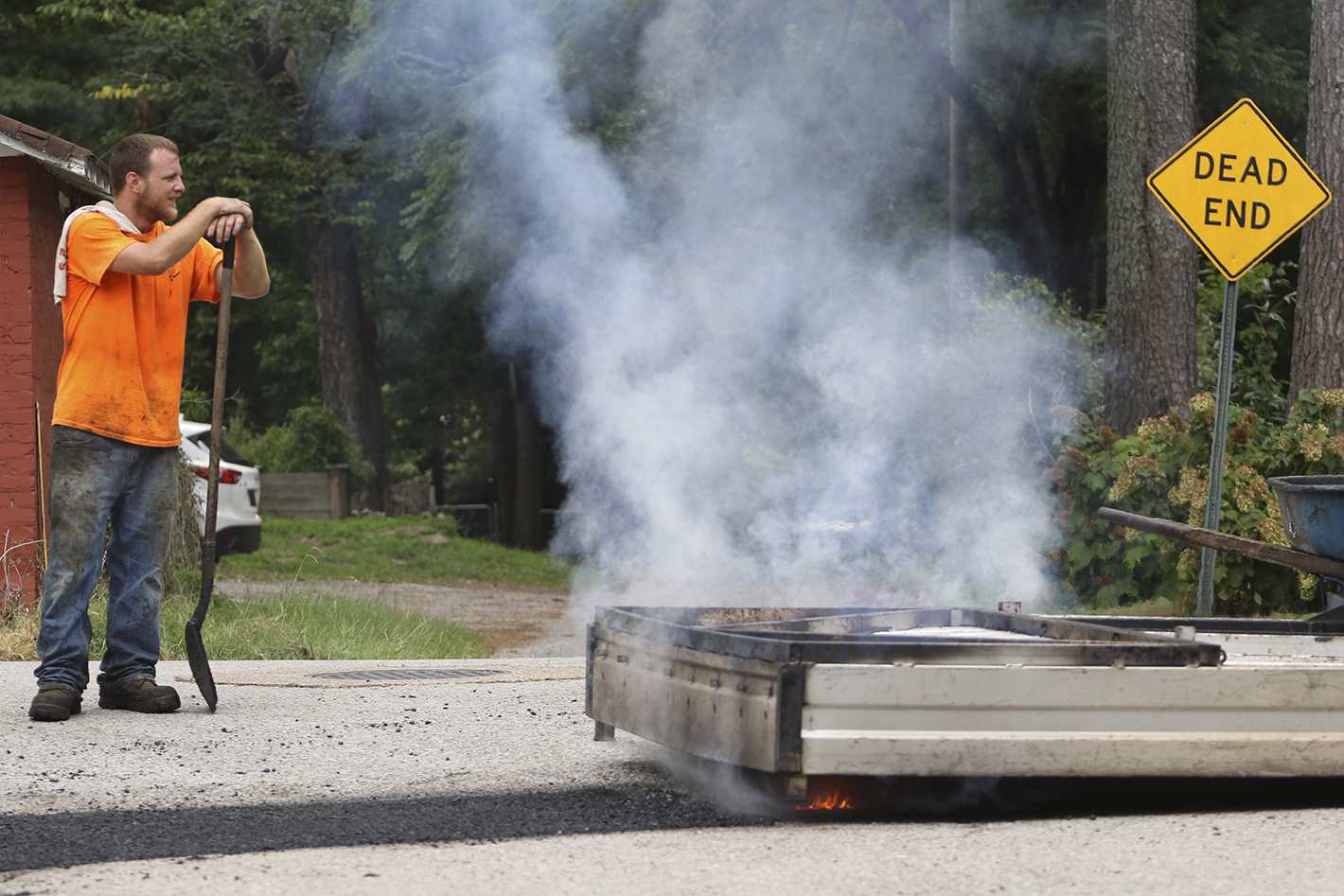This is it - the hottest and hardest stint of the year, when for a few weeks, area high temperatures will reach the upper 90s and make simply being outdoors a potential health hazard.
For those who make a living working outside or braving the elements in some fashion, these are brutal days.
Today for instance, temperatures are expected to hit around 96 degrees, according to the National Weather Service. And with a relative humidity of 50 percent, it actually will feel more like a 102-degree day, and that hits a point just shy of what the federal government considers "dangerous," according to NOAA.
So if you have to work outside, you prepare where and how you can, says Josh Helton, project manager and estimator at local roofer JDH Co. Inc.
"We're usually on the roof as soon as we get some daylight," Helton said.
More heat in the forecast
The heat wave that has been gripping parts of the southern and eastern U.S. will continue today, with a high temperature in the 90s predicted for Chattanooga. The weather will be partly sunny, with a breeze beginning in the afternoon and a 30 percent chance of showers and thunderstorms before 2 p.m. Source: National Weather Service
Helton directs teams of tough-as-nails roofers at JDH and said that around this time each year, work days can start as early as 5:30 a.m, depending on what conditions are forecast.
By starting earlier, crews can go home by 3:30 p.m. to 4 p.m. and duck out of heat danger.
On top of shifting schedules around, Helton also said company officials encourage crews to take care of themselves when they are home, on their own time.
"We try to get our guys to hydrate before they head to bed at night," Helton said. "That always helps them in the morning."
JDH is also steering away from older and hotter roofing technologies - like black tar adhesives - that add heat to the job. Black tar, he said, is "baked" on-site at a temperature of about 200 degrees.
And ironically, though it's the toughest season for roofers, summer is also the busiest season for them.
On the ground, meanwhile, folks like Michael Jenkins - all the crews doing block, brick, concrete and other masonry jobs - know the pain of 90-degree days like these.
"We do change up our day," said Jenkins, vice president at Jenkins Masonry.
He said his crews typically get a 7 a.m. start on the work day when it looks like temperatures are going to get potentially dangerous.
Jenkins also said his company makes sure there are plenty of water coolers on the job site, and that crews are taking plenty of breaks.
But "I don't know that we've ever said it's been too hot" to work, he said.
Kevin Horne, co-owner of Service Heat and Air Conditioning Inc., shares the feeling.
While HVAC techs spend a lot of time indoors working, they're often crawling around the oven-like crawl spaces and attics in peoples' homes - where conditions can teeter on actually being worse than outdoors.
"The only place you have that's cool in this business is your van," Horne said.
So Horne's crews "just to have to pace themselves," he said.
And in this time of year when the heat wreaks havoc on air units, it's not uncommon for HVAC crews to work "daylight to dark," Horne said.
For him - and Jenkins and Helton - there is common ground, outside the shared labor and sweat late summer brings: all have an idea what the perfect day for work would be.
"It would probably be sometime in the fall," Helton said. "October's great."
For Jenkins, it's some mild April day.
"Seventy-five to 80 degrees, low humidity, little breeze blowing," he said.
While for Horne, it's a little different.
"We want the worst weather we can get," he said. "We want extremes."
Because this time of year may be hard on the body, but it's good for the wallet.
Contact staff writer Alex Green at agreen@timesfreepress.com or 423-757-6480.

